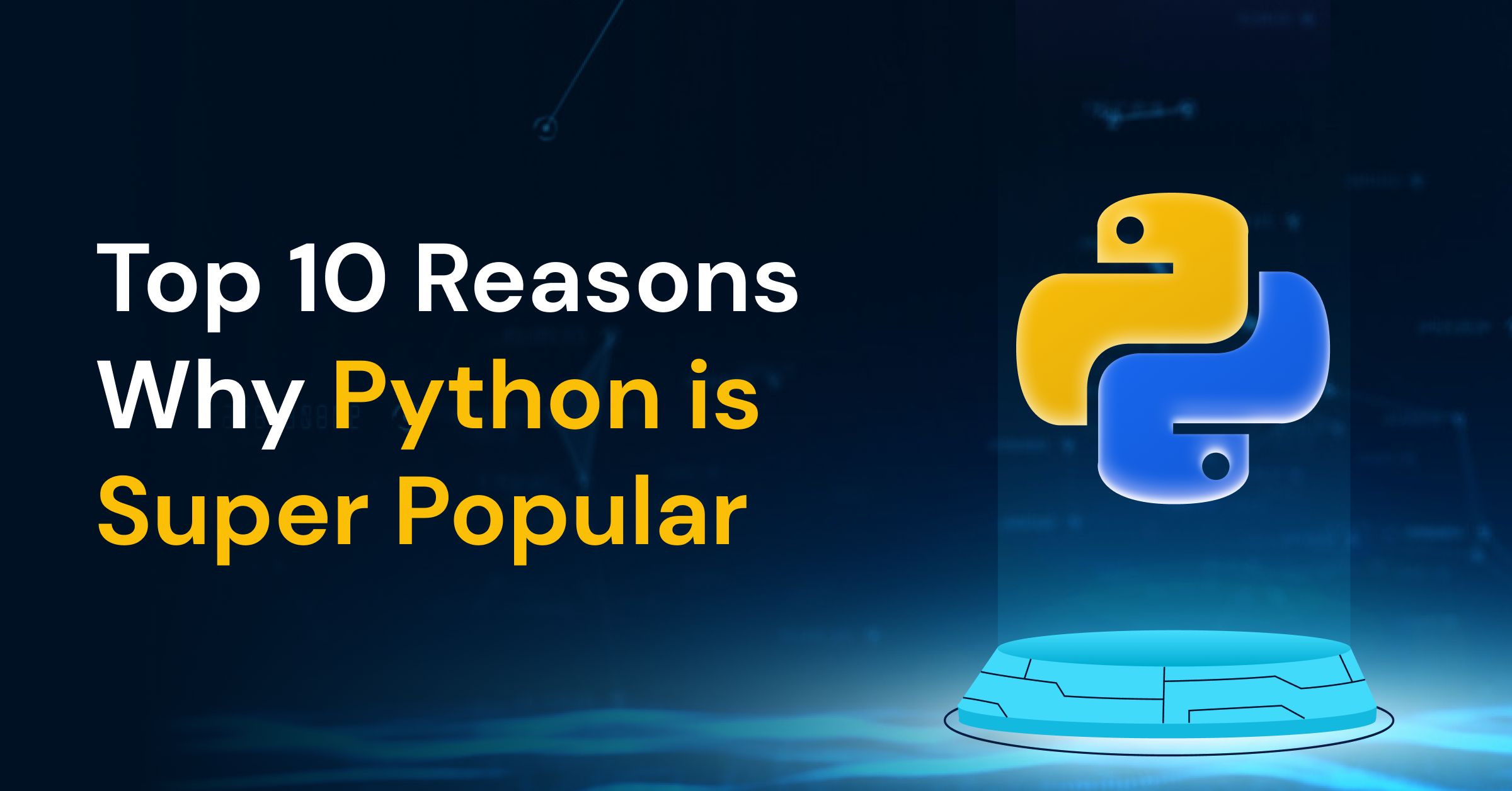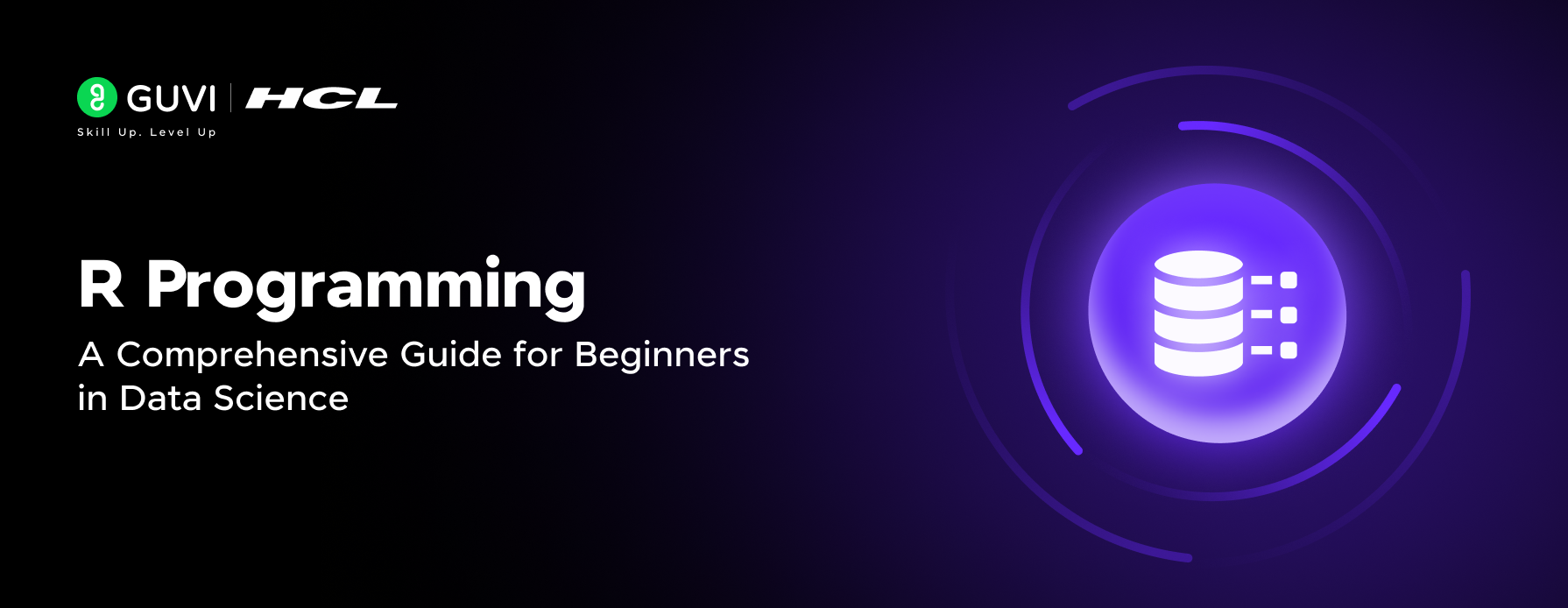
Best Python Deep Learning Libraries You Should Know!
Mar 03, 2025 7 Min Read 5227 Views
(Last Updated)
Looking out for the best python deep learning libraries? Then, this curated list is for you!
Deep Learning is a common subset of a larger group of machine learning techniques. To be precise, Deep Learning focuses on databases that are constantly evolving. As a comparatively recent term, the immense number of tools available can be daunting for some of the professionals, who are already working in or considering entering the industry.
However, we have sorted this out for you! So, here is a list of the best python deep learning libraries that will end your overwhelming search quest.
Table of contents
- Best Python Libraries For Deep Learning
- #1 Tensor Flow
- #2 TFLearn
- #3 PyTorch
- #4 Theano
- #5 Keras
- #6 NLTK
- #7 Orange3 - one of the best python deep learning libraries
- #8 OpenNN
- Conclusion
Best Python Libraries For Deep Learning
Well, if you are one of the GUVIans, then you might be already familiar with some data science and machine learning libraries. If not please feel free to read them. And then let’s move on to understand the deep learning libraries, which are also used in some programs of machine learning.
Firstly, in python, there are hundreds of deep learning libraries. We will discuss some of them in this blog. The deep learning libraries are external open-source Python libraries. So, we can’t install many of them by directly using the pip command. Here, the way of installation of each library is different.
We can use a combination of some library files in the program. All libraries have their own features to solve machine learning and deep learning problems. Most of the deep learning libraries work on Python 3.7 or later versions.
Let’s understand each library file in detail. To understand more about any library, just go to the mentioned website links of respective library files or click the below link.
Read this to get started with Python: How to set up Python environment!
#1 Tensor Flow

TensorFlow is an open-source symbolic math library for machine learning. It is based on neural networks.
Above all, it is on data flow and differentiable programming.
Development
Google has created TensorFlow in November 2015. And the first version of it was released on February 11, 2017. It is written in C++, CUDA, and Python.
TensorFlow’s name originates from the operations, that neural networks perform on multidimensional data arrays, known as tensors.
Furthermore, Tensors are algebraic object, which describes a relationship between sets of algebraic objects related to a vector space.
Utilization
It is good for product-based firms like Airbnb, Airbus, PayPal, VSCO, Twitter, etc. because it offers an outstanding model.
The feature of TensorFlow as a Tensorboard allows for the visualization of model parameters, gradients, and performance. Above all, TensorBoard is a web-based visualization tool.
We also use TensorFlow to develop machine learning models. It also allows putting machine learning models in production mode across numerous platforms as in the cloud or on-premises, in the browser, or on-device.
To deploy machine learning models, we use TensorFlow frameworks as TensorFlow lite.
Availability
TensorFlow is the best library for deep learning. It focuses on the training of deep neural networks. In computer graphics for deep learning, we use TensorFlow Graphics. TensorFlow mainly uses python 3.7 or later versions and anaconda.
Above all, it is available on 64-bit Windows, Linux, macOS, and mobile computing platforms including Android and iOS. Tensorflow provides backend compatible APIs for other programming languages.
It has a dependable and large community. So, we can easily use tensor flow in virtual machines. Also, run it on multiple CPUs, GPUs (graphics processing unit), and TPUs (tensor processing units).
Installation Of TensorFlow
- Tensorflow works on CPUs and GPUs.
- We can install TensorFlow by using the pip command as “pip3 install <tensorflow wheel file path> or pip3 install tensorflow or pip3 install tensorflow-gpu”.
- We can also install TensorFlow in Anaconda by using the conda command as “conda install tensorflow”.
- To run TensorFlow in GPUs, we need to install the CUDA toolkit first.
- Before installing TensorFlow, we need to first install the latest version of numpy and scipy.
- Importing Module
So, after installing TensorFlow, we can import it by using this syntax “import tensorflow” as tf.
Application Of TensorFlow
- It is mainly used to create “Automated Automatic image annotation (or automatic image tagging) software” as DeepDream. In this software, the computer system automatically assigns metadata (i.e. data that provides information about other data) in the form of keywords to a digital image.
Let’s take an example of a New York City image.
- Here, the first image is an original digital image. However, the second image is an implementation of TensorFlow.


- This application of computer vision is widely used in image retrieval systems. They also help in organizing and locating images of interest from a database.
Before diving into the next section, ensure you’re solid on Python essentials from basics to advanced-level. If you are looking for a detailed Python career program, you can join GUVI’s Python Career Program with placement assistance. You will be able to master the Multiple Exceptions, classes, OOPS concepts, dictionary, and many more, and build real-life projects.
Also, if you would like to explore Python through a Self-paced course, try GUVI’s Python Self-Paced course.
#2 TFLearn

The TFLearn works with TensorFlow. It is a modular and transparent deep learning library built on top of TensorFlow. It is designed to provide a higher-level API to TensorFlow to facilitate and speed up the experiments while remaining fully transparent and compatible with it.
TFLearn has easy ideas to build highly modular network layers, optimizers, and various metrics embedded within them. So, we can say it is easy to use and understand. It has attractive graph visualization features for weights, gradients, and activations. Moreover, it has many useful functions to train the built-in tensors.
Installation Of TFLearn
- We can install TFLearn after installing TensorFlow. It works with TensorFlow.
- We can install it by using the pip command as “pip3 install tflearn”.
- We can also install it in anaconda by using these commands“conda install pip” & “pip install tflearn”.
Importing Module
After installing TFLearn, we can import it by using this syntax “import tflearn”
Application Of TFLearn
- Most of the deep learning and AI models utilize them.
#3 PyTorch
PyTorch is an open-source machine learning and deep learning library, which is based on the Torch library.
Development

was developed by Facebook’s AI Research lab (FAIR) in September 2016. It is written in C++, CUDA, and Python.
In PyTorch, the py word is for python, and the torch word is for the torch library. The Torch library is not directly used in python. So, Facebook has created an extended version of the Torch library as PyTorch. This is in python language.
Torch is an open-source machine learning library and a scientific computing framework. It is used for the Lua programming language as LuaJIT (i.e. scripting language). It provides a wide range of algorithms for deep learning.
The torch provides a flexible N-dimensional array or Tensor. It supports basic routines for indexing, slicing, transposing, type-casting, resizing, sharing storage, and cloning.
Utilization
Many big companies like JPMorgan Chase, Comcast, Amgen, IBM, SparkCognition use PyTorch for their different works.
PyTorch has a tender learning curve. Also, it has different tools for computer vision, machine learning, and NLP. Because of that, it has become popular in the machine learning and data science market. It is easier than other machine learning libraries so we can say it is beginner-friendly.
Availability
PyTorch has good community support. It works with multiple GPUs. It is used for developing computational graphs. Additionally, we can change it on runtime.
If we compare PyTorch with TensorFlow, TensorFlow is better for production models and scalability. On the other hand, PyTorch is easy to learn and lighter to work with. Also, it is better for building rapid prototypes and desired projects.
Installation Of PyTorch
- To install PyTorch, we need to install all dependencies such as the latest version of pip, setup tools, numpy, and scipy.
- PyTorch works with/without CUDA toolkit so accordingly we have to install CUDA.
- Anaconda is the easiest way to install PyTorch because anaconda has all dependent libraries.
- We can install PyTorch by pip3 command as “pip3 install <wheel file path of pytorch>”. Or by anaconda as “conda install < PyTorch path>”. We get the PyTorch path for Anaconda by selecting programming language on the PyTorch website.
Importing Module
After installing PyTorch, we can import it by using this syntax “import torch”
Application Of PyTorch
Above all, it is mainly used for computer vision and natural language processing applications.
#4 Theano

Theano is an open-source library used for fast numerical calculations. It is an enhancing compiler for defining, optimizing, manipulating, and calculating mathematical expressions.
Development
The LISA group at the University Of Montreal, Quebec, Canada developed Theona in 2007. Primarily, it is written in CUDA and Python.
Theano mainly takes your structure and converts it into very well-organized code which uses Numpy. The syntax of Theano is a symbolic form. So it is easy to understand and use by beginner programmers.
We should be defining all the expressions in the abstract sense, then compile them, and later use them for calculations. Theano avoids errors and exceptions automatically when working with logarithmic and exponential functions.
We have seen Theano calculate expressions faster with dynamic C code generation. The code execution is also faster in Theano.
Utilization
Matrix-valued or multi-dimensional arrays implement Theano efficiently. In Theano, calculations are expressed using a NumPy-Esque syntax. Furthermore, Theano is the combination of Numpy and Sympy.
Installation Of Theano
- Theano works on CPU and GPUs. The GPU theano is faster than CPU theano.
- We can install theano by using the pip command as “pip install theano”
- Also, we can install it in an anaconda by using the conda command as “conda install theano”.
Importing Module
After installing theano, we can import it by using this syntax “import theano”
Application Of Theano
- Theano used for scientific computing in Deep Learning Projects. It creates Deep Learning models or wrapper libraries that we can use to simplify the process.
- We use it to handle the calculation part of large neural network algorithms in Deep Learning.
#5 Keras

Keras is an open-source library. And provides a python interface for artificial neural networks. It works as an interface for TensorFlow. Therefore, we use it to create a deep learning model.
Development
It is written in Python and developed by François Chollet in March 2015.
Utilization
Keras includes many functions that we use to build neural network blocks. These blocks are like layers, objectives, activation functions, and optimizers. It works with images and text datasets. Therefore, it creates easy deep neural network code for them.
Keras has different functions for convolutional and recurrent neural networks. Keras supports common utility layers like dropout, batch normalization, and pooling.
Availability
Keras run on CPU and GPUs. Keras is supported by multiple backbends like TensorFlow, Microsoft Cognitive Toolkit, Theano, and PlaidML. Above all, it also has a large community.
Installation Of Keras
- To install Keras, we have to first install dependent libraries such as numpy, scipy, and Theano.
- We can install Keras in Python by using the pip command as pip install Keras.
- We can install Keras in Anaconda also by using the command “conda install Keras”.
Importing Module
After installing Keras, we can import it by using this syntax “import Keras”
Application Of Keras
- We use Keras to create deep learning models. And, we use them for prediction, feature extraction, and fine-tuning.
#6 NLTK

NLTK means Natural Language Toolkit. We use it for creating Python programs. So, these python programs work with human language data for application in statistical natural language processing.
Development
It was developed in 2001 by Steven Bird, Edward Loper, and Ewan Klein. And, it is written in Python.
NLTK includes functions and libraries related to text processing. So, libraries like word tokenization, tagging, dependency parsing, stemming, semantic reasoning, chunking, and classification include it. In other words, we can say, NLTK is a bunch of many machine learning libraries.
Utilization
We mainly use NLTK for natural language processing tasks. These include neural machine translation, language modeling, and named entity recognition. It offers a synonym bank dubbed wordnet and includes n-gram.
Moreover, it is good for education, computational linguistics, and research work. That is to say that engineers, researchers, industry users, students, linguists, and educators can use it.
Installation Of NLTK
- We can install NLTK in Python by using the pip command as pip3 install nltk.
- We can install NLTK in Anaconda also by using the command “conda install nltk”.
Importing Module
After installing NLTK, we can import it by using this syntax “import nltk”
Application Of NLTK
- It helps the computer preprocess, understand, and analyze the written text. Moreover, we use it for text processing.
#7 Orange3 – one of the best python deep learning libraries

Orange is an open-source python library containing different tools for data visualization, data mining, and testing machine learning algorithms. Furthermore, it provides front-end visualization for data analysis and visualization. So, we use the python Orange3 library for data manipulation and widget alteration.
Development
It was developed by scientists at the University of Ljubljana in 1996. It is written in C++.
Orange3 was primarily developed for creating high-accuracy recommendation systems and predictive models. Orange3 uses numpy, scipy, and scikit-learn for scientific computing, and for GUI (graphical user interface). It works with the Qt framework.
Utilization
Orange3 is a widget-based structure that contains different components for different works like creating data analysis workflow after placing widgets on canvas interface, comparing algorithms, showing data tables, creating predictive models to find the precise business forecast, preprocessing, subset selection, etc.
Installation Of Orange3
- We can install Orange3 in Python by using the pip command as pip3 install orange3.
- We can install Orange3 in Anaconda also by using the command “conda install orange3”.
- By default, in installation, orange3 contains several machine learning, preprocessing, and data visualization algorithms. These are divided into 6 component sets as classifying, data, evaluate, visualize, unsupervised, and regression. Additionally, we can increment functionality for text-mining, bioinformatics, and data fusion.
Importing Module
After installing Orange3, we can import it by using this syntax “import Orange”
Application Of Orange3
- You can find the utilization of Orange3 in biomedicine, genomic research, and bioinformatics for testing new machine algorithms and developing new techniques.
- Also imbibed in teaching for educating biology, informatics, and biomedicine students for data mining methods and machine learning.
#8 OpenNN


OpenNN stands for Open Neural Network. It is an all-purpose purpose artificial intelligence software package and mainly works for deep learning research.
Development
It was developed in 2003 at the International Center for Numerical Methods in Engineering. Again, it is written in C++.
Utilization
It includes many machine learning algorithms as a bunch of functions. These algorithms mainly find their use in predictive analytics tasks. Certainly, it increases computer performance by using multiprocessing programming (such as OpenMP).
Above all, it designs neural networks with universal approximation properties. So, supervised learning implements multiple layers of non-linear processing units.
Then, we can integrate these data mining functions into other software tools through respective APIs.
So, it contains classy algorithms and utilities to deal with many artificial intelligence solutions.

OpenNN is much faster than PyTorch and TensorFlow. To be precise, it trains models 2.51 times faster than PyTorch and 12 times faster than TensorFlow.
Installation Of OpenNN
- We can install OpenNN in Python by using the pip command “pip install OpenNN”.
- In the same vein, we can also install OpenNN in Anaconda by using the command “conda install OpenNN”.
- OpenNN uses the C++ language to use it in python, we need to install pybind11 also. We use the pybind11 to map the core C++ features to Python.
Importing Module
After installing OpenNN, we can import it by using this syntax “import OpenNN”
Application Of OpenNN
- We use OpenNN in the engineering, energy, marketing, health, and chemistry sectors. It helps us in solving predictive analytics tasks.
- It also finds its implementation in advanced analytics and neural network implementation.
Kickstart your Programming journey by enrolling in GUVI’s Python Career Program where you will master technologies like multiple exceptions, classes, OOPS concepts, dictionaries, and many more, and build real-life projects.
Alternatively, if you would like to explore Python through a Self-Paced course, try GUVI’s Python Self Paced course.
Conclusion
So, do you want to stay up-to-date with these constantly emerging libraries? Get in touch with the community by observing and communicating with the deep learning open source applications. These are already accessible.
But there you have it: our comprehensive collection of deep learning libraries and applications. Master Python from the ground up and get into the highest paying tech jobs with us!

Do let us know if there is anything that we have missed in the comment section.





















![What is Django Framework? A Beginner's Guide [2025] 15 django](https://www.guvi.in/blog/wp-content/uploads/2025/07/django.webp)
![Top Data Science Programming Languages All Beginners Must Know [2025] 16 data science programming language](https://www.guvi.in/blog/wp-content/uploads/2025/06/Feature-Image-3.png)



![What is TypeScript? A Beginner's Guide [2025] 20 typescript](https://www.guvi.in/blog/wp-content/uploads/2025/05/What-is-TypeScript_-A-Beginners-Guide.png)




Did you enjoy this article?